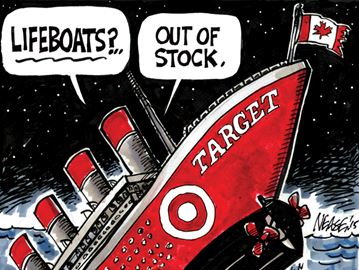The apparent causes of Target’s failure in Canada are well documented. They went in too big, too fast. Unresolved supply chain issues led to empty shelves. Add poor site selection, some poor store designs and questionable merchandising and, well, you have the makings of a case study that will be discussed in my International Business classes for years to come.
Target’s Canada experience is particularly useful to me as a teaching tool because Canada seems, well, so similar to the U.S. Yet it’s hidden surprises led a very successful U.S. company to suffer a $2 billion market entry loss.
I would like to see companies—particularly American companies—stop making the same, very avoidable and often rather spectacular, foreign market entry mistakes. Such mistakes—along with a few notable successes, provide a fascinating and dramatic backdrop for my upcoming book on corporate globalization entitled The Four Dimensions of Global Business.
I am not writing this to say ‘I told you so’ to Target. I might have made some of the same decisions and indulged in many of the same assumptions. It’s not harmful to have assumptions—we all do. What’s important is (1) knowing that you have assumptions; and then (2) what you do about your assumptions when they are proven false.
The Target Canada failure hits very close to home.
I know nearly a hundred current and former Target employees-many of whom were my best students. The Minneapolis campus of Metropolitan State University, where I currently lead the International Business program, is a mere three blocks from Target’s world headquarters.
Target’s Canada failure also feels a lot like a failure I experienced first-hand: Thomson’s smaller, but no less humiliating withdrawal from Germany in 2003.
Thomson swaggered into Germany in 2000 burdened with all of the assumptions that can come from long, seemingly effortless success in much larger, very different markets. Thomson needed to do some things in Germany—like make an anchoring acquisition the “German way”—that was just a bridge too far for that very Anglo-American company. In short, Thomson couldn’t adapt.
But wait, you say, that’s Germany. Can’t a Minnesota company be forgiven for assuming some things about Canada? They speak English, play a lot of hockey and drive Chevrolets. Don’t we share the world’s longest unfortified border?
But, you see, that’s just the point. It is one thing to believe (and then be relatively unsurprised when proven wrong later) that everything you do successfully here in the U.S. will also work a “very” foreign market—say China. You are prepared for surprises because the language, culture—everything—is so different.
But when the surprises happen (as they always will) in a market that seems so similar . . .
Today I quote the famous Prussian military strategist, Moltke the Elder, for a point that every internationally expanding company (even those eying “easy” Canada) should pound into its senior leaders:
“No plan of operations extends with any certainty beyond the first contact with the [enemy].”
Of course, you need a plan to go to battle. But winning the battle once it starts isn’t about how well you planned. It is all about how quickly you learn and adapt once the battle is joined.
So, my friends, go ahead and do your market entry research. Nurture and defend your fondest assumptions. Have your clever MBA’s build more of those fabulous ppt. decks that always impress and comfort the CEO.
But remember that when the first bullet is fired–when your in-country people actually enter the market–they will get kicked around. They will come back to the HQ bruised and bleeding to tell you things that you don’t want to hear because they shatter cherished assumptions and demand rapid, sometimes radical changes in plan. If the company can’t make those critical battlefield adjustments, then it’s just a matter of time (and money) before it’s all over.

